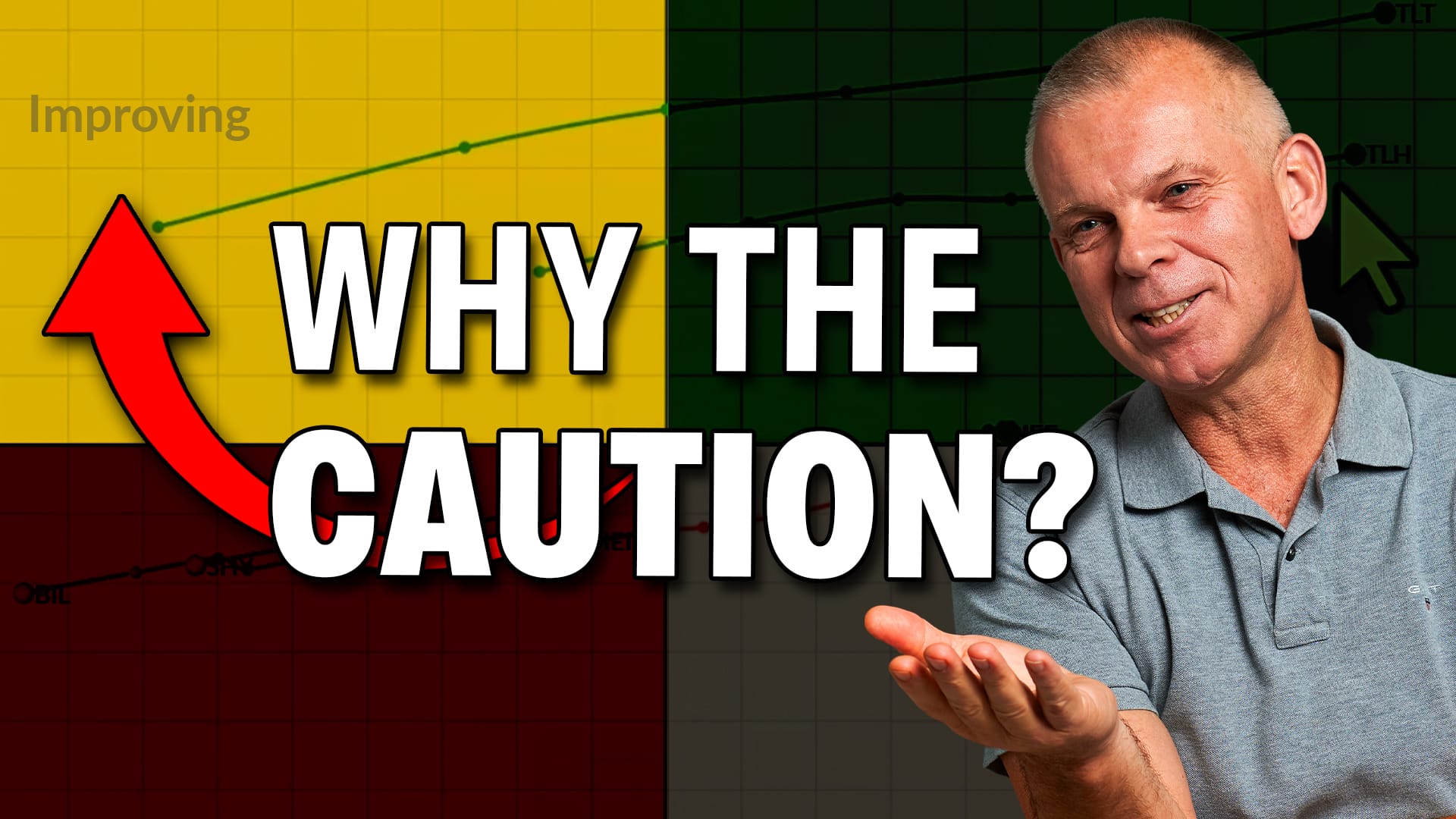IWM VOLATILITY REMAINS HIGH AS RESISTANCE ZONE NEARS -- SEMICONDUCTOR HOLDRS CHALLENGES SEPTEMBER HIGH -- BROKEN RESISTANCE MARKS NEXT SUPPORT ZONE FOR DOLLAR -- EURO SURGES AS LATEST PLEDGE IS ANNOUNCED -- GOLD ETF CHALLENGES CONSOLIDATION RESISTANCE
IWM VOLATILITY REMAINS HIGH AS RESISTANCE ZONE NEARS... Link for todays video. The Russell 2000 ETF (IWM) is up over 10% in the last five trading days. While this is certainly a strong move, it is still within the realm of the new normal in volatility. Chart 1 shows IWM with the 5-day Rate-of-Change in the first indicator window and the 4-day Rate-of-Change in the second window. The 5-day Rate-of-Change swung from below -7% to above +10% three times in the last eight weeks (blue arrows). The most recent swing occurred from Tuesday to Monday (4 to 10 October). These are massive swings. There are some interesting parallels brewing. First, notice that all three swings are from Tuesday to Monday (exactly five trading days). Second, notice that IWM started lower soon after the last two five day swings. Third, notice that the first two swings in August did not result in a lasting trend reversal.

(click to view a live version of this chart)
Chart 1
The 4-day Rate-of-Change indicator shows nine swings that were greater than 5% since early August. This is a little more than one big swing every week. The prior swings fizzled after breaking above the 5% level (numbers 2,4,6 and 9). On the price chart, IWM broke above the upper trendline of a falling wedge and is about to enter a big resistance zone from the September highs (yellow area). Yes, I realize this is a big resistance zone, but high volatility makes zones more realistic. While the past patterns are not guaranteed to repeat, upside could become more difficult soon because IWM is short-term overbought and near resistance. Chart 2 shows SPY breaking the upper trendline of a falling wedge and nearing a resistance zone from the September highs.

(click to view a live version of this chart)
Chart 2
SEMICONDUCTOR HOLDRS CHALLENGES SEPTEMBER HIGH... The Semiconductor HOLDRS (SMH) continues to lead the market as it edges above its September high in early trading on Monday. The about-face in the last five days has been most dramatic. Chart 3 shows SMH going from a support test just below 26 to a resistance challenge around 29.50. SMH has surged over 10% from Tuesdays open to the highs early Monday. Admittedly, SMH is a tough call right now. On the bearish side, there is a Double Top support break in August. This support break turns into resistance around 30.50, which is confirmed by the 50% retracement. On the bullish side, SMH held support in the 26 area and surged with strong momentum the last five days. Also notice that the Price Relative broke out in September and moved higher in October. This SMH:SPY ratio indicates that semis are showing relative strength, which is a positive for the Nasdaq and technology sector. Whether bullish or bearish, SMH is getting overbought and near resistance. This increases the chances of a consolidation or short-term correction unfold in the coming days.

(click to view a live version of this chart)
Chart 3
BROKEN RESISTANCE MARKS NEXT SUPPORT ZONE FOR DOLLAR... The US Dollar Fund (UUP) moved into an uptrend with the Double Bottom breakout, but is currently in corrective mode after hitting resistance at a key retracement. Chart 4 shows UUP breaking resistance in the 21.8 area and surging to 22.60 with a very sharp advance in early September. This advance retraced 61.80% of the prior decline, which is a Fibonacci number that can be found using the Fibonacci Retracements Tool. The greenback is correcting and we can now use the Fibonacci Retracements Tool to estimate support. A 50% retracement would extend to the 21.75 area, which is confirmed by broken resistance. This is a basic tenet of technical analysis: broken resistance turns support.

(click to view a live version of this chart)
Chart 4
The first indicator window shows the Dollar ETF along with the Swiss Franc Trust (FXF). Notice that the Dollar and Swiss Franc are negatively correlated. The Swiss Franc ETF advanced in the first half of 2011 and the Dollar ETF declined. Most recently, Swiss Franc ETF peaked in early August and the Dollar ETF bottomed in early August. The second window shows the 63-day Correlation Coefficient for these two. Unsurprisingly, this 3-month Correlation Coefficient has been negative for over a year and is currently below -.80, which shows a strong negative correlation. There are two reasons for recent negative correlation. First, the Swiss Franc, by virtue of geography, is closely tied to Europe. Second, the Swiss Franc was helped lower by intervention from the Swiss Central Bank (Sept 6th). The Swiss Franc is considered a safe-haven currency, but the intervention pushed traders from Francs to Dollars.
EURO SURGES AS LATEST PLEDGE IS ANNOUNCED... The Dollar ETF is falling sharply because the Euro is rising sharply. The Euro accounts for around 57% of the US Dollar Fund (UUP) and the US Dollar Index ($USD). The Euro is, by far, the single biggest influence. Reports are circulated that Merkel and Sarkozy have agreed to a deadline for a comprehensive solution to the European debt problem. Dexia Bank, which passed the European stress test just a few months ago, suddenly failed and spurred a new round of pledges. However, we have yet to see details or a concrete agreement. Just more pledges of support. Nevertheless, the Euro is surging and Dollar bears are covering their shorts today.

(click to view a live version of this chart)
Chart 5
Chart 5 shows the Euro Currency Trust (FXE) with broken support turning into next resistance around 139. Also notice the Fibonacci cluster in the 138-140 area. Instead of relying on one measurement using the Fibonacci Retracements Tool, this chart shows the measurements extending from two declines. The first decline extends from the May high to the October low. A 38-50% retracement of this decline would extend to the 138-140 area. The second decline extends from the late August high to the October low. A 50-61.80% retracement of this decline would extend to the same area. Both retracement zones are confirmed by broken support turned resistance.
GOLD ETF CHALLENGES CONSOLIDATION RESISTANCE... A sharp decline in the Dollar sparked a bounce in the Gold SPDR (GLD) early Monday. Chart 6 shows GLD finding support around 155 and consolidating the last two weeks. In last Mondays Market Message, I noted the reasons for the Spot Gold ($GOLD) to find support in the 1555-1580 area. On the GLD chart, the late January trendline, broken resistance and the 50-61.80% retracement zone all point to support in the 150-155 area. Turning back to the consolidation, resistance is set at 162.5 and the ETF is challenging this level as I write on Monday. A breakout here could signal a resumption of the long-term uptrend in gold. The danger would be if a rising flag or small rising wedge develops. A break below 155 would then signal a continuation lower.

(click to view a live version of this chart)
Chart 6
Chart 7 shows weekly bars for the Spot Gold ($GOLD). Overall, the ETF is in a long-term uptrend with a rising channel taking shape. Gold hit the lower trendline of this channel in late September and bounced back above 1600. This is an important test for the long-term uptrend. Also notice that RSI is firming near 50. The 50 area marked support several times during the last three years. This is an important test for momentum.









